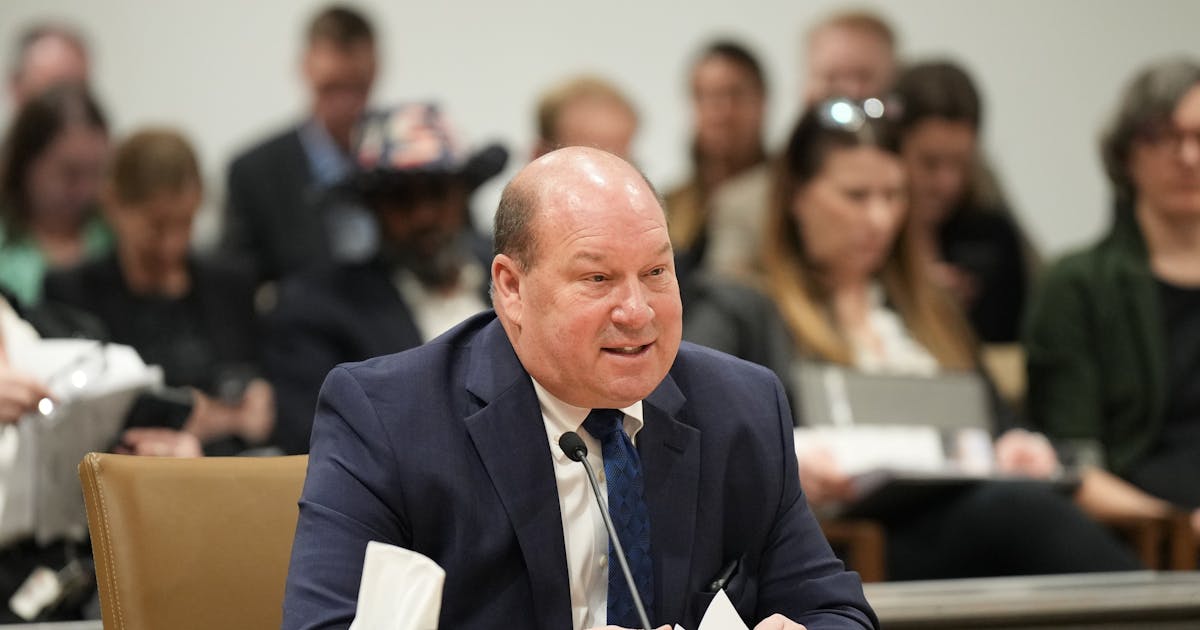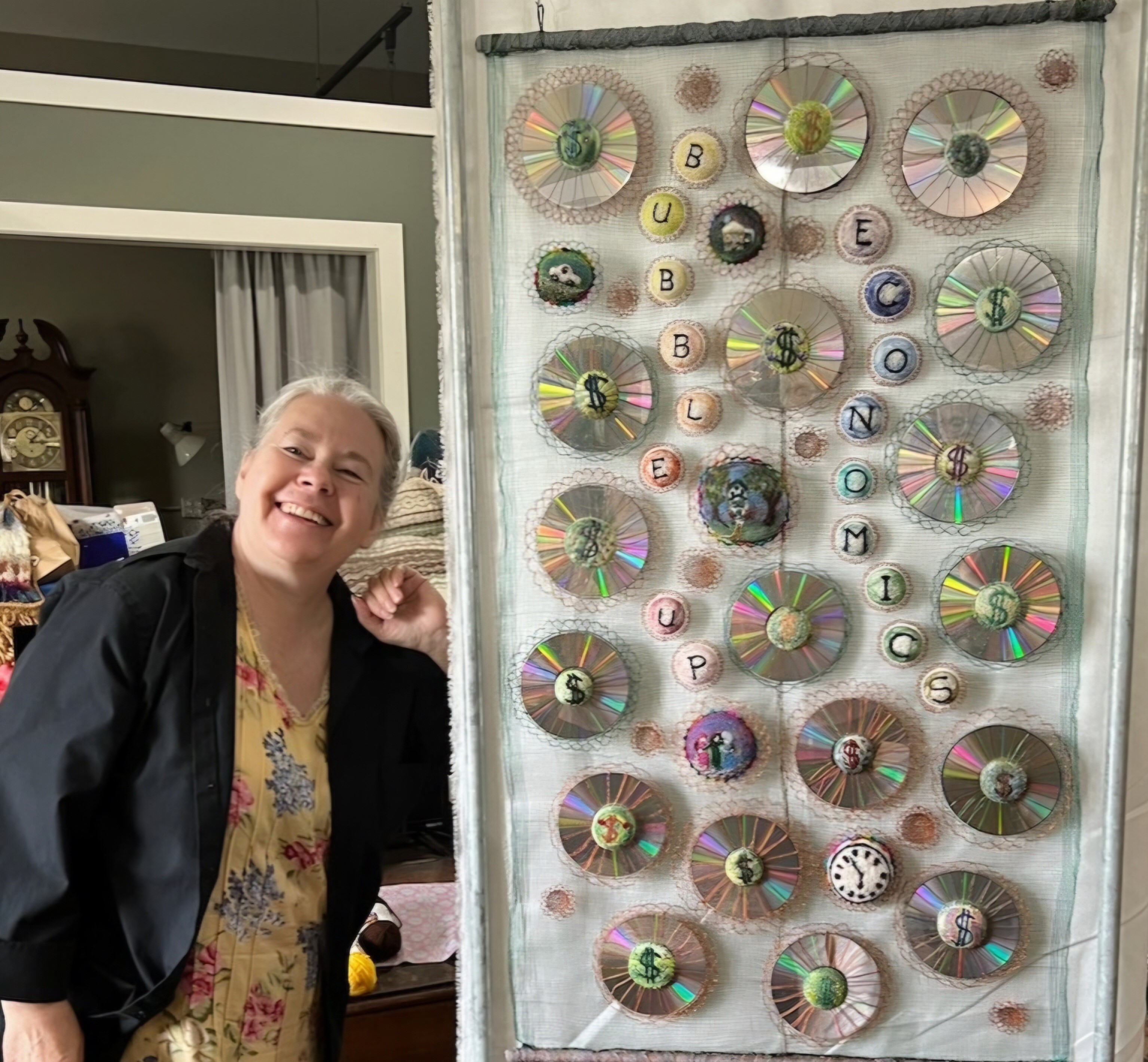Star Tribune
Here’s how Uber and Lyft are trying to get their way in Minneapolis and the rest of Minnesota

For more than a year in Minneapolis and at the State Capitol, Uber and Lyft have been waging a battle to stave off regulations championed by progressive Democrats and organized groups of drivers — but the multibillion-dollar companies have not spent big to make their feelings known.
Instead, in a tactic echoing their original surge into taxi markets across the globe a decade ago, the rideshare giants have tried to marshal allies who use and rely on their service, including riders, drivers and some disability groups.
The effectiveness of that strategy is now being tested, after the Minneapolis City Council approved minimum pay requirements for drivers. Uber and Lyft declared they would leave and council members have been inundated with feedback.
“I’ve received hundreds of emails and phone calls myself,” Minneapolis City Council Member Aurin Chowdhury said at a recent meeting.
Lyft has said it will leave Minneapolis and Uber has said it will leave the entire metro when the new minimums take effect May 1 — although there’s a chance the council could soften its ordinance. At the State Capitol, the current version of proposed statewide regulations is also unpalatable to Uber and Lyft — although there’s hope among Gov. Tim Walz and Democratic leaders that a compromise can be reached.
But in a twist that reveals how rapidly ensconced the companies have become, the one-time upstart disrupters now hold an air of establishmentism, with center-left politicians, civic groups and business leaders among their chief boosters today. On Thursday, an Uber-spearheaded campaign — #BringRidesBack — formally launched. The effort, designed to mobilize people to email lawmakers, is a partnership including the Minneapolis Regional Chamber, Minneapolis Downtown Council, Hospitality Minnesota, Minnesota Business Partnership and left-leaning national tech advocacy groups.
Of course, both companies are also spending money on lobbyists to influence policymakers in public and behind the scenes.
How much are they spending?
Both companies declined to provide dollar figures on their combined spending on advertising, mobilizing and lobbying efforts. But disclosures filed with the Minnesota Campaign Finance Board provide a window into their lobbying at the Legislature.
Uber spent $80,000 on three registered lobbyists last year, including two New York-based Uber executives. Lyft has six lobbyists registered in Minnesota and spent $140,000 in 2023. Lyft spent more in 2014 — in excess of $233,000 — the year the apps fought to get off the ground.
The companies were far from the biggest spenders last session, according to state campaign finance data — contradicting a characterization by some critics that the multinational giants have essentially pocketed politicians via the greenback. For context, Xcel Energy spent the most on lobbyists in 2023, shelling out $2 million, and the Minnesota Chamber of Commerce spent $1.9 million.
Uber and Lyft are not above pouring cash into public debates; the Washington Post reported that Uber spent half a billion dollars to try to repair its image in 2019 after a string of scandals. In 2015, the company spent $9 million supporting a failed referendum to repeal a crackdown by the city of Austin, Texas.
In Minneapolis, Lyft and Uber appear to have spent little trying to influence last year’s election, in which all 13 City Council seats were up — as was the balance of power between a traditional DFL group aligned with Mayor Jacob Frey and a more progressive group. The latter prevailed in enough races to create the majority that overruled Frey’s veto earlier this month.
A review of city campaign donations to candidates, as well as political action committees supporting candidates, turned up scant donations that could be readily linked to the companies.
The lone donor with clear ties was Joel Carlson, a longtime lobbyist who represents Uber in addition to 17 other clients. Carlson made four donations totaling $1,450 to four campaigns: Frey’s and three candidates aligned with him.
“I’ve been contributing to these people for a decade,” Carlson said in an interview, characterizing himself as a longtime donor in local politics separate from any one issue. “I have issues in front of the the City Council that are unrelated to Uber.”
While Uber and Lyft have the ear of Frey and top Walz administration officials — they each had a seat on a state task force that examined driver compensation last year — they’ve failed to make inroads with those pushing the regulations they don’t like.
Sen. Omar Fateh said at a recent Senate hearing that he didn’t attend any of the task force meetings, and the companies’ entreaties to progressives on the Minneapolis City Council have been rebuffed.
“I gave up trying,” Carlson said, explaining that several council members didn’t return his calls.
Lyft representatives scored a video call with two of the ordinance’s co-sponsors in late February, but CJ Macklin, the company’s senior manager for policy communications, said it was brief, and the council members didn’t ask any questions. “In all instances related to the Minneapolis ordinance and last year’s vetoed state bill, those efforts to collaborate were soundly rejected by the bill sponsors in favor of legislation devoid of any understanding of how our industry works,” he said.
The mobilization script
Carlson said he sees riders as advocates for the apps — which include contact information and can send push notifications to their phones. And there are plenty of riders, he said, with some 300,000 trips made in the Twin Cities every week.
“People are concerned with what’s going to happen with these services because they have come to rely on them,” Carlson said.
When Uber first arrived in major cities from New York to London, it was met with a combination of excitement from a younger generation seeking cheap and smartphone-ready rides and outrage from the taxi industry, which foresaw ridesharing as a threat to its existence.
The company’s most visible advocates were often riders who, mobilized by social media, rallied to its defense and packed government meetings. The company’s playbook, however, was not without friction. In cities across the nation, as in Minneapolis, the company charged into markets — “illegally” in the words of then-City Council Member Frey — putting local governments on the defensive. Frey was the lead sponsor of Minneapolis’ current rideshare ordinance.
The current mobilization script harkens back to a campaign almost a decade ago to let Uber operate at the Minneapolis-St. Paul International Airport.
In 2016, Uber assembled their drivers, clad in matching blue T-shirts, to protest the Metropolitan Airports Commission’s rules for ride-hail drivers to work the airport.
But the dynamic among drivers might be different today. While some drivers have recently begun publicly speaking out against the Minneapolis ordinance, it was a group of well-organized drivers who started the current campaign for wage minimums.
Star Tribune
Mahtomedi volleyball keeps clicking, stays undefeated with sweep of South St. Paul

Mahtomedi’s volleyball team started the 2023 season 3-7. But still, the Zephyrs peaked at the right time and made it to state for a second year in a row.
This go-around, undefeated Mahtomedi (10-0) hasn’t taken long at all to start clicking.
On Tuesday night, 14 kills each from senior outside hitter Kaili Malvey and senior middle blocker Silvie Graetzer helped the Zephyrs sweep visiting South St. Paul 25-17, 25-18, 25-10.
After the program’s first trip to state in 2022, then returning in 2023, the team is thriving. With seven seniors and five juniors on the roster and all its starters returning, Mahtomedi “started at such a higher point this season,” Graetzer said. “And now our end goal is so much higher. We’re not there to get to state. We’re there to do damage at state.”
Against South St. Paul (14-4), the Zephyrs dealt with injuries to two sidelined starters heading into the match and faced the Packers’ high-swinging outside hitter, senior Alaina Panagiotopoulos.
“[Our injured players, Sahar Ramaley and Katie Hergenrader] pushed us to play for each other, and I think we really executed,” Malvey said.
Nine digs and 14 service receptions by junior libero Claire Crothers, plus six blocks by Graetzer, helped numb the swinging sting of Panagiotopoulos’ eight kills. They prepped for her in practice, focusing on eye work in blocking drills and taking up space on the court.
Another offseason key for the Zephyrs took place 10 minutes down the road in Lake Elmo. While not all of last year’s starters played club, all of them participated in club training this year, with a big Zephyrs contingent at Kokoro Volleyball. Even if the Zephyrs weren’t on the same team at Kokoro, they saw each other in the weight room, learned similar schemes.
Star Tribune
A guaranteed income program for Minnesota artists gets extended and expanded

St. Paul is among the cities that have tried sending money to very low-income residents, studying the results. When Springboard launched its project in 2021, it was one of the nation’s first guaranteed income programs aimed at artists.
“It’s not because we think artists are more deserving or more worthy than anyone else,” said Laura Zabel, Springboard’s executive director. Creative work is one form of labor that, like caregiving, “our economy doesn’t value” but that communities need — now more than ever, she said.
“I love thinking about guaranteed income as a way of honoring that we all have contributions to make to our community, and we need a little bit of time and space and breathing room to make those contributions,” Zabel said.
A similar experiment also started in 2021 in San Francisco, run by the Yerba Buena Center for the Arts, has ended. In 2022, the Creatives Rebuild New York program began providing some 2,400 artists in New York with $1,000 per month for 18 months. That same year, Ireland’s government began providing 2,000 artists about $350 a week, or about $18,200 a year, as part of a three-year pilot program.
Every 18 months, Springboard has extended its program’s funding. Now, it’s guaranteeing artists five years of income. The first 25 participants, who have received income since 2021, will see that money continue for two more years. Those who started receiving it 18 months ago, including 25 artists in Otter Tail County, will continue. And the 25 new recipients there will begin the program knowing they’ll get money for five years.
“So, from a research perspective, that’s very exciting — to be able to research and understand some of the difference between folks who know from the beginning the longer time horizon,” Zabel said, “and what that allows them to do in terms of planning and commitment to their community.”
Star Tribune
Duluth man pleads guilty to killing girlfriend who had a no-contact order against him

DULUTH — A Duluth man who said he doesn’t remember killing his girlfriend pleaded guilty to second-degree murder without intent Tuesday in St. Louis County court — a plea deal that could land him in prison longer than sentencing guidelines would dictate.
Dale John Howard, 25, told Judge Theresa Neo that he doesn’t remember it but believes he caused the death of his girlfriend, Allisa Marie Vollan, 27, on March 22. Vollan, described on a fundraising site as a “bright young lady” with “an abundance of friends,” had a no-contact order against Howard at the time of her death. Howard could be sentenced to 20 years in prison — more than seven years longer than Minnesota’s presumptive guideline for the murder. According to the county attorney’s office, the longer sentence is legal because of the active domestic abuse no-contact order against him.
Howard’s sentencing is scheduled for Oct. 14.
According to court documents, officers responded to a morning call at Howard’s Central Hillside apartment and found him beneath a blanket with Vollan, who was dead. He told officers that he had hung out with Vollan late the previous night, then left to meet friends at a bar, and Vollan went to sleep in a guest room. When he tried to move her into his bedroom the next morning, she wasn’t breathing. He called his father, who was at the apartment when Duluth police arrived.
Neighbors in the upper level of the duplex told officers that, in the time before Howard would have left for the bar, they heard a woman crying and an angry male voice. They heard muffled moaning, thuds and the sound of something being dragged. They recorded it.
A preliminary autopsy by the Midwest Medical Examiner’s Office found that Vollan had likely been smothered.
Earlier the same month, Howard had been arrested after neighbors saw him repeatedly slam Vollan’s head into a door. The no-contact was issued by a St. Louis County judge.



